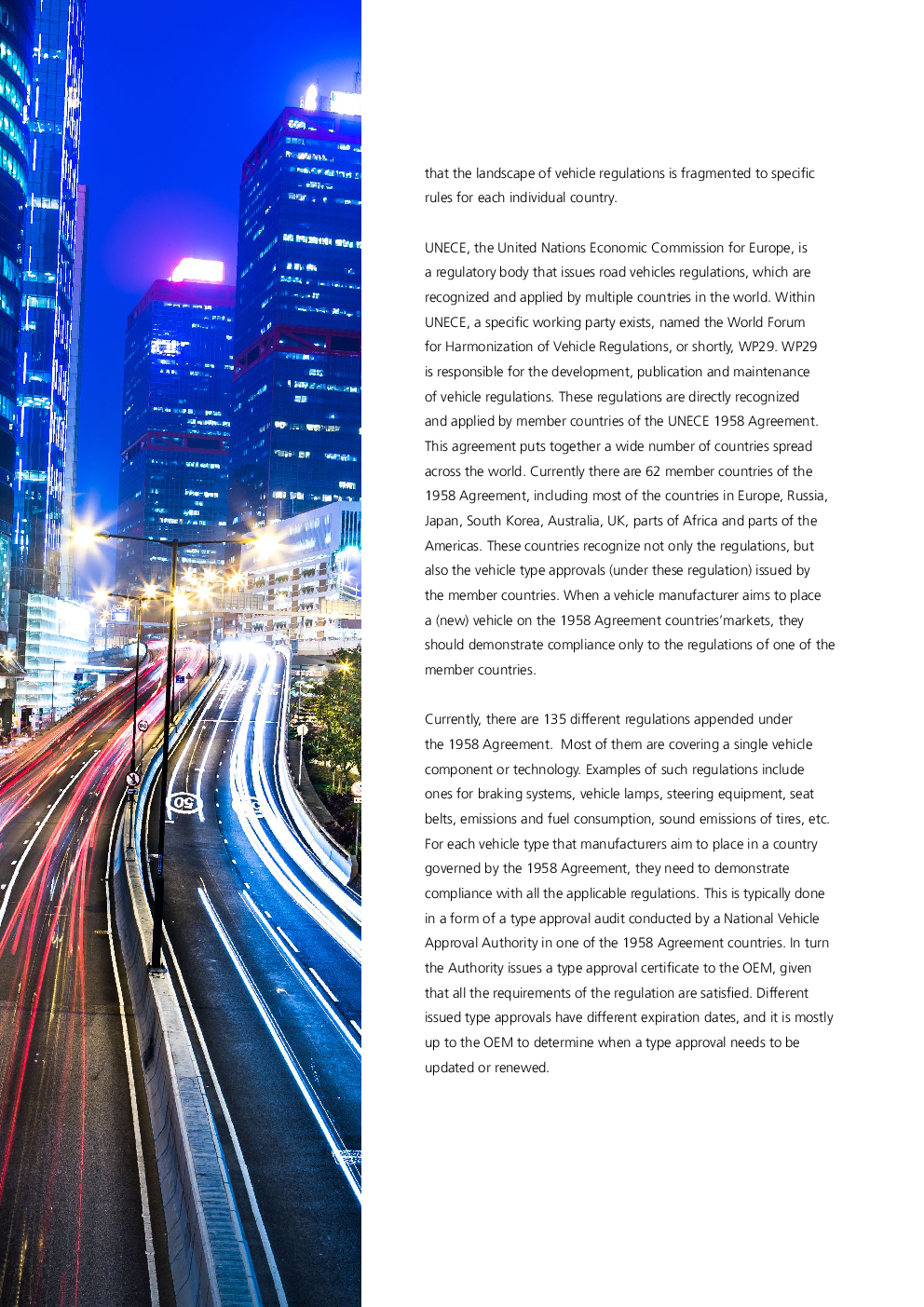Unece Wp.29 Cybersecurity Regulation
UNECE WP.29 Cybersecurity Regulation: Enhancing Automotive Industry Safety and Security
The Importance of UNECE WP.29 Cybersecurity Regulation
The automotive industry has witnessed significant advancements in recent years. With the integration of cutting-edge technologies, vehicles have become smarter and more connected than ever before. However, this digital transformation has also brought about new challenges, particularly in the realm of cybersecurity. In order to address these challenges and ensure the safety and security of vehicles and their occupants, the United Nations Economic Commission for Europe (UNECE) has introduced the WP.29 Cybersecurity Regulation.
Under the UNECE WP.29 Cybersecurity Regulation, automotive manufacturers and suppliers are required to adhere to specific cybersecurity measures to protect vehicles from cyber threats. This regulation sets the groundwork for enhanced safety and security standards, ensuring that vehicles are resilient against potential cyberattacks that could have disastrous consequences.
The Key Objectives of UNECE WP.29 Cybersecurity Regulation
1. Establishing a Strong Foundation for Vehicle Security

The UNECE WP.29 Cybersecurity Regulation lays the foundation for robust cybersecurity practices in the automotive industry. By requiring manufacturers to implement necessary security measures, it aims to minimize the vulnerabilities that could be exploited by cybercriminals.
2. Protecting Vehicles and Passengers from Cyber Threats

By implementing the UNECE WP.29 Cybersecurity Regulation, the automotive industry aims to safeguard vehicles and their passengers from potential cyber threats. Through stringent cybersecurity measures, manufacturers can ensure that vehicles remain secure throughout their lifecycle.
Benefits of UNECE WP.29 Cybersecurity Regulation
1. Enhanced Vehicle Safety

One of the primary benefits of the UNECE WP.29 Cybersecurity Regulation is the increased safety of vehicles. By mandating the implementation of cybersecurity measures, manufacturers can detect and prevent potential cyberattacks that may compromise the safety of occupants or the functionality of the vehicle.
2. Protection Against Data Breaches

With the increasing integration of connected technologies in vehicles, the risk of data breaches becomes a significant concern. The UNECE WP.29 Cybersecurity Regulation ensures that appropriate security measures are in place to protect the sensitive data stored in vehicles, such as personal information and vehicle performance data.
Frequently Asked Questions (FAQ) about UNECE WP.29 Cybersecurity Regulation
Q1: What is UNECE WP.29 Cybersecurity Regulation?
The UNECE WP.29 Cybersecurity Regulation is a set of guidelines and requirements introduced by the United Nations Economic Commission for Europe to enhance the safety and security of vehicles in the automotive industry.
Q2: Who needs to comply with UNECE WP.29 Cybersecurity Regulation?
All automotive manufacturers and suppliers worldwide need to comply with the UNECE WP.29 Cybersecurity Regulation to ensure the implementation of necessary cybersecurity measures in their vehicles.
Q3: How does UNECE WP.29 Cybersecurity Regulation protect vehicles from cyber threats?
By mandating specific cybersecurity measures, the UNECE WP.29 Cybersecurity Regulation ensures that vehicles are resilient against potential cyber threats. This includes measures to detect and prevent cyberattacks, as well as securing sensitive data stored in vehicles.
Q4: What are the benefits of UNECE WP.29 Cybersecurity Regulation?
The UNECE WP.29 Cybersecurity Regulation brings several benefits, including enhanced vehicle safety, protection against data breaches, and a stronger foundation for vehicle security, among others.
Q5: How can automotive manufacturers implement UNECE WP.29 Cybersecurity Regulation?
Automotive manufacturers can implement the UNECE WP.29 Cybersecurity Regulation by integrating the required cybersecurity measures in the design, development, and production processes of their vehicles. This may include secure software development practices, threat detection systems, and regularly updating software and firmware.
In conclusion, the UNECE WP.29 Cybersecurity Regulation plays a crucial role in bolstering the safety and security of vehicles in the ever-evolving automotive industry. By setting clear guidelines and requirements, it ensures that automotive manufacturers and suppliers take the necessary steps to protect vehicles from cyber threats. This regulation not only benefits the industry but also enhances the overall safety and security of vehicles, empowering consumers to embrace the digital advancements of the automotive world with confidence.
UNECE WP.29 And ISO/SAE 21434: Automotive Cybersecurity Faces New
 Image Source : www.etas.com
Image Source : www.etas.com UN R155 And UN R156 Set Framework For Automotive Cybersecurity - News
 Image Source : www.etas.com
Image Source : www.etas.com Understanding The UNECE WP.29 Cybersecurity Regulation (CSMS)
 Image Source : www.upstream.auto
Image Source : www.upstream.auto wp29 unece regulation cybersecurity csms upstream
UNECE CYBERSECURITY REGULATION (R155) - State Of The Art And Relation
 Image Source : www.grcc.vip
Image Source : www.grcc.vip UNECE WP.29 Cybersecurity Regulation – What Is The Impact? | KPMG Sofy
 Image Source : www.kpmgsofy.com
Image Source : www.kpmgsofy.com UNECE-Regularien Für Automotive Cybersecurity Verabschiedet | ESCRYPT
 Image Source : www.escrypt.com
Image Source : www.escrypt.com The UNECE Industrial Accidents Convention - EECentre
 Image Source : eecentre.org
Image Source : eecentre.org unece logo convention
How UNECE WP.29 And ISO/SAE 21434 Will Contribute To The Development Of
 Image Source : ginkgo-cybersec.com
Image Source : ginkgo-cybersec.com Unece-regularien für automotive cybersecurity verabschiedet. Understanding the unece wp.29 cybersecurity regulation (csms). Unece logo convention. Unece cybersecurity regulation (r155). How unece wp.29 and iso/sae 21434 will contribute to the development of